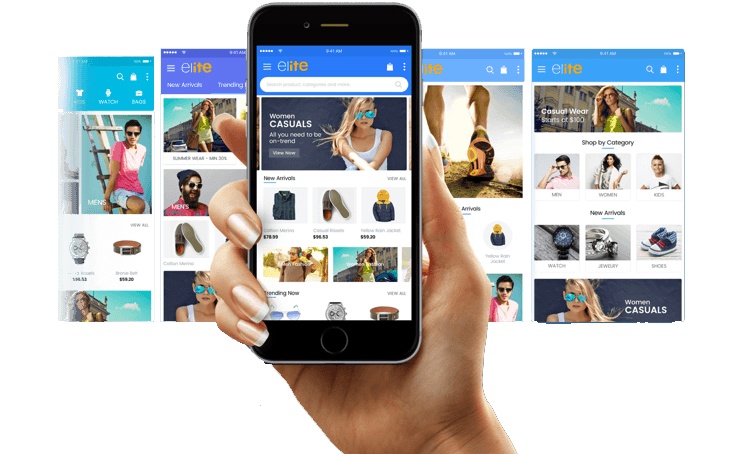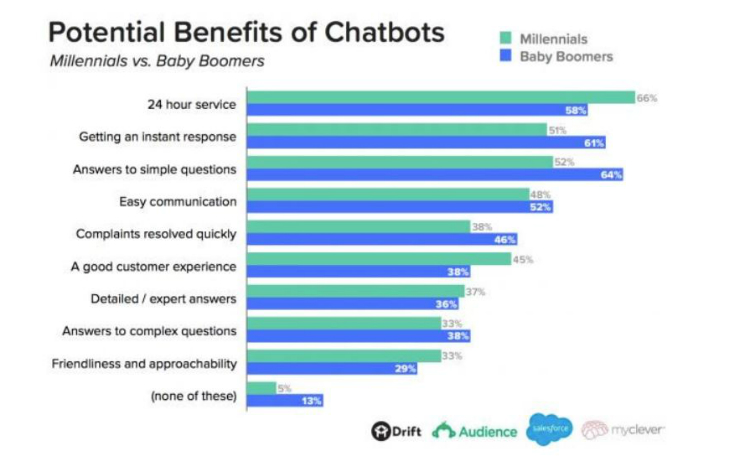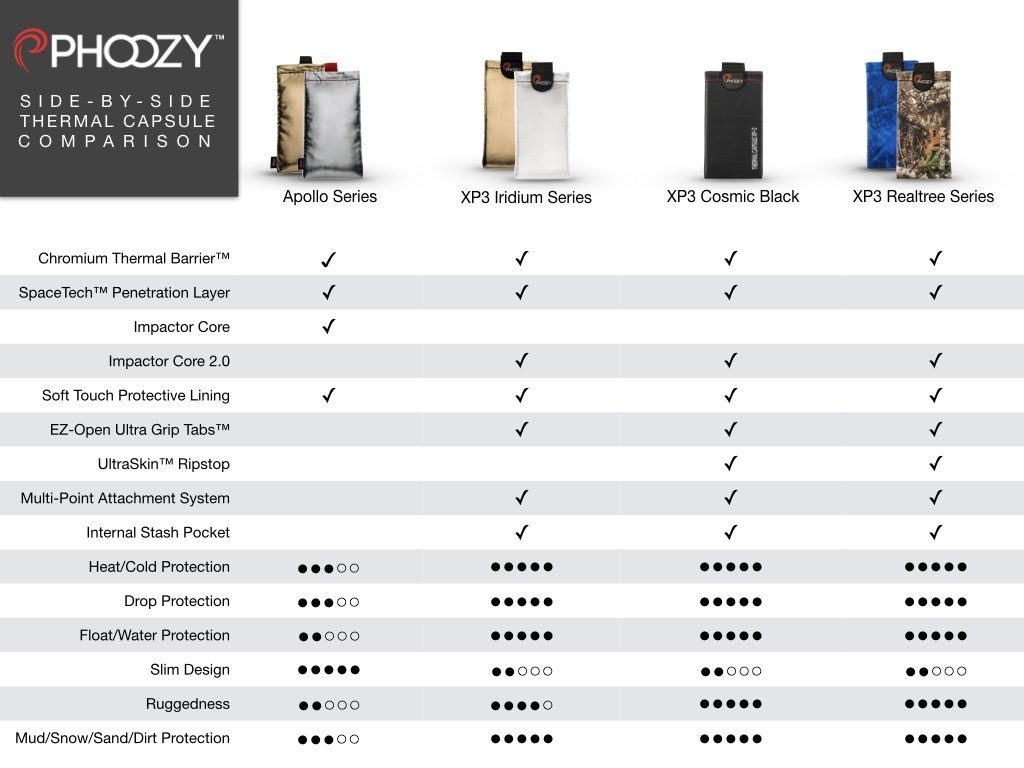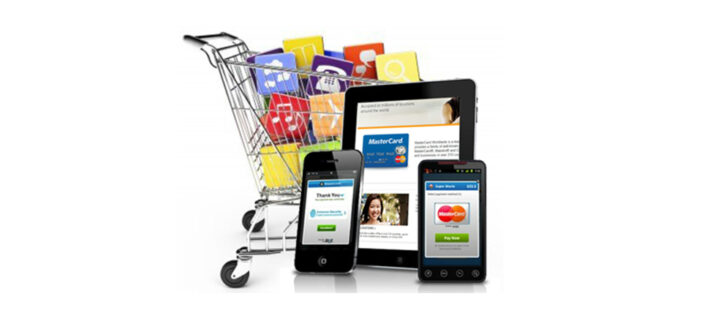Recent statistics and trends prove Mobile commerce has become strongly influential shopping option in 2019. Check out the following facts and tips to optimize your mobile commerce experience.
Understanding mobile commerce
Mobile commerce or m-commerce is the natural evolution of eCommerce that contains any financial transaction implemented via a mobile device. Just by using their smartphones, the customers can now shop from anywhere. It has also lead to the development of new industries like electronic tickets, mobile banking, location-based services, coupons, mobile money transfers and in-app payments.
The general term can be classified into three types: mobile banking, mobile payments, mobile shopping. Although some transactions might be limited to Mobile banking, the experience is not very different from online banking. Banks usually have a special app or use chatbots and messaging apps. Mobile shopping involves customized websites, social media channels and dedicated apps. Mobile payments have diverse payment options, that would be introduced later in the article.

Trends and advantages that Mobile Commerce Offers
1. M-commerce is on the TOP
In 2019 M-commerce sales make 44.7% of total US eCommerce sales as compared to 39.6% in 2018. Particularly during the Black Friday in 2018 over third of online sales were done via smartphones according to Adobe analysts. Emarketer predicts global eCommerce sales will rise 4.058 trillion by 2020, and m-commerce will have a significant role in this picture, as mobile devices own more than 50% of traffic. Consequently, having a mobile-optimized website is a must now.
2. Better user experience
With eCommerce, shopping was made easier. Consumers had access to more affordable pricing and a wider range of products with just using their laptop or computer. By maintaining these advantages m-commerce has taken shopping to a new level, allowing the customer not to use even their desktops.

Moreover, to boost customer experience new m-commerce applications add augmented reality, chatbots and messengers making communication with the customers easier. Not only do eCommerce platforms introduce 100% SEO responsive websites, making them easier to use on mobile, but also a lot of businesses have mobile-only experiences. And it is not a surprise that such kind of brands have higher conversion rates thanks to easy site navigation, customized browsing experience for m-commerce.
3. Customized payment systems
With the growth of m-commerce, consumers have faster and easier ways to pay. The global mobile payment market will increase by more than 33.8% during 2023. The payments are made via digital wallets and apps like Samsung Pay, Paypal, Apple Pay, Amazon Pay. Offering an easy and secure digital wallet in your eCommerce store can bring you more mobile user checkouts. Spare your customers the necessity to enter a credit card, shipping address details by introducing a trusted brand.
4. Lower conversions with smartphones
The growth of Mcommerce hasn’t secured higher conversions from desktops due to the lack of trust to mobile shopping. As mentioned above to give shoppers an opportunity for familiar payment systems can build trust and increase conversions.

The high bounce rate can also be caused by a difficult checkout process. comScore reports 19.3% of customers abandon shopping cart because of navigating complexity. Modify your mobile checkout by breaking form to several steps and using buttons. These can make the mobile screen experience more user-friendly.
Some brands introduce text messages to the payment channel. The customer texts to set an account, after which the customer representative sends a secure link to enter credit card and address information. So, the transaction process should withdraw all unnecessary steps.
5. Omnichannel strategy works
Omnichannel experience is about selling both online and offline and using as many channels as possible. By optimizing your mcommerce, do not forget about other sales channels. Harvard Business Review research on 45000 shoppers claims that 73% of shoppers used more than one channel to shop and only 7% were online-only shoppers. Be consistent in your in omnichannel strategy. That means you should have clear messaging through all channels like your own store or wholesale, mcommerce or desktop ecommerce.
Make sure your brand messaging is on par to your customers, as every interaction with your product or service influences the customer experience no matter the channel. In short, be where your customers are and offer them what they want to buy.
The Challenges of This Commerce Option
1. Optimization nonstop
Your website loading speed is crucial for a high conversion rate. You need to constantly keep up with technologies to make sure your website is fast and easy to use.

2. Specified payment system
Some mobile wallets are not available in all countries and some customers prefer a specific payment option. If you don’t introduce location-based payment option you will lose on conversions. So as not to disrupt the checkout process, you can offer automatically filled in IP addresses as a user checks out. Studies show that people have a harder time making a decision if they have more choice. Try not to have a lot of payment options, rather than find one that best meets your customer’s needs and is the most efficient mix for you. Note, that one click options are the best.
3. Comparing prices is easier
Instead of scanning catalogues, checking a wide range of shops until a customer will get exhausted has become way easier with mobile commerce. Consumers can effortlessly compare shipping costs, prices in hundreds of shops and find the one with the most affordable prices. You can get over it by checking your competitors’ prices as much as possible.

4. Obey a variety of regulations
This is challenging both for eCommerce and mobile commerce. Tax laws and regulations differ from country to country and you should investigate them with every new target country. Some stores ship only to specific countries to escape tax restrictions, but that can reduce your market.
To sum up, marketers should follow the mcommerce trends, understand its challenges by optimizing their mobile stores, providing secure payment systems, developing omnichannel strategy for each customer.
About the Author
Tigran is a marketing and creative content specialist at Smarketa.com with a primary focus on SEO, PPC and customer satisfaction for eCommerce business. Being a true humanist she draws inspiration from the simple thing as everyday life and the matters one come across on a daily bases doing her best and above to help everyone around.


